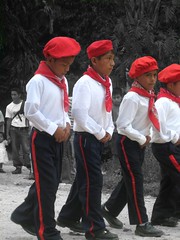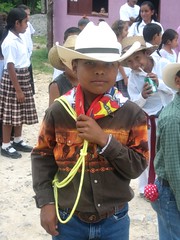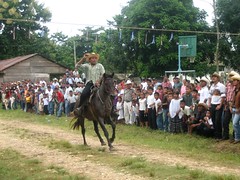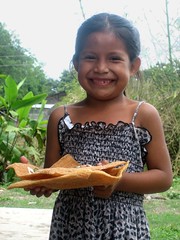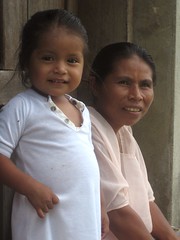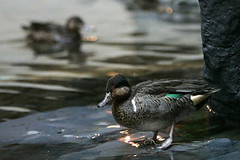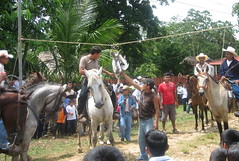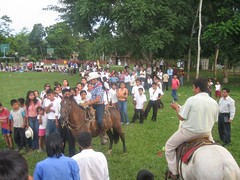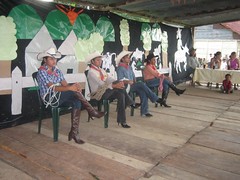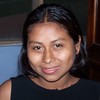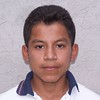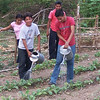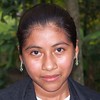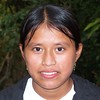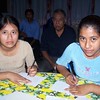
Corby and Don Ramon with the Christmas pig
For us, it is difficult to get used to a green Christmas, especially since we have been hearing about all the snow in Minnesota this year. We struggled to find creative ways to make it feel like Christmas while it was 80 degrees. Luckily, a large coconut tree feel down in our front yard a couple days before Christmas, which allowed us to use the palm branches for a makeshift tree- lights and all.

Decorating the Christmas Palm
Christmas Eve is the biggest day of celebration for Guatemalans. We spent our day helping neighbors make the traditional meal of tamales, which consists of corn paste, a chile sauce and a small piece of chicken, all wrap up in a banana leaf. After being here for almost 2 years, I finally found myself liking the taste of tamales, but that has worn off over the last few days.

Preparing tamales with the Prado family
We spent the evening at church with our friends and neighbors, singing the same Christmas songs as we sing in the states, only in Spanish. There were endless invitations afterward to join families in their homes for tamales. We were overwhelmed by the spirit of the season as people welcomed us and shared their food and company. Corby and I had a difficult time consuming 2 tamales at every house we went to and as a result we have over 10 sitting in the refrigerator right now.
At midnight people lined the main street, some sat with chairs in their front yard and everyone threw firecrackers. The entire town was alive with excitement. The Catholic church walked through town in a procession singing songs and people spent the rest of the night into Christmas Day with their families, eating and socializing.

Catholic Procession through town
While we missed being with our own families at home, we look forward to next Christmas when we all will be together again and cherish the memories of Christmas in Salacuim. We are heading to Belize for the New Year and are looking forward to seeing a new part of Latin America.
¡Próspero Año!



































